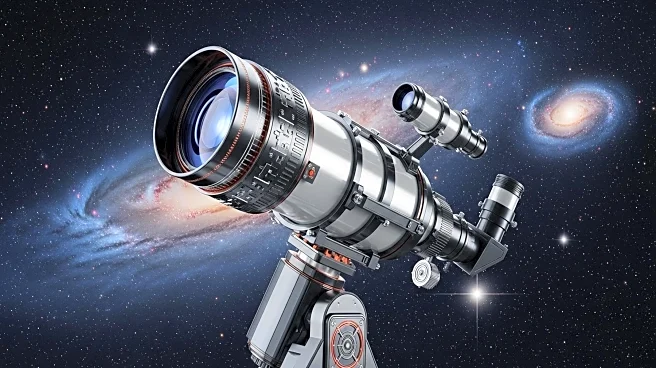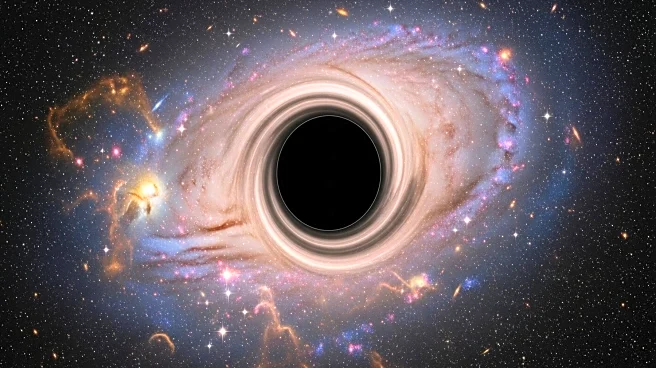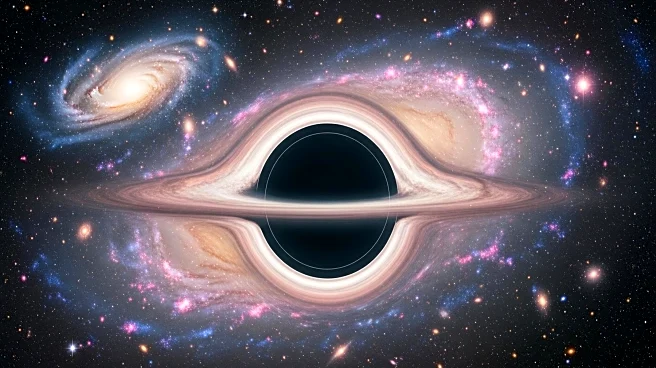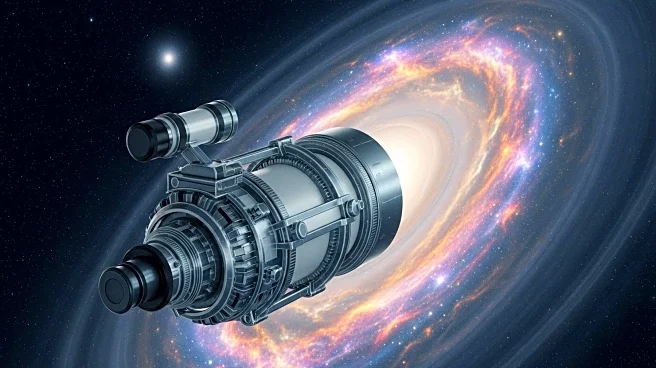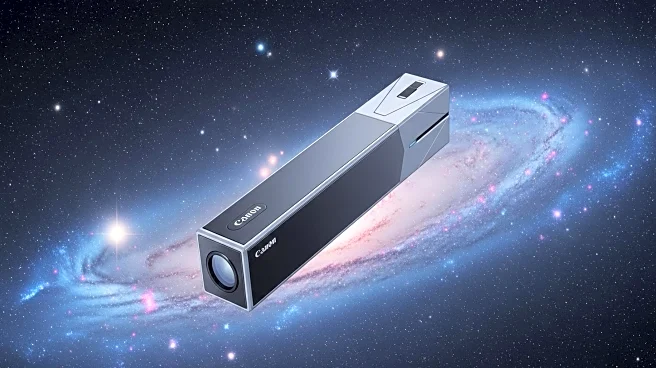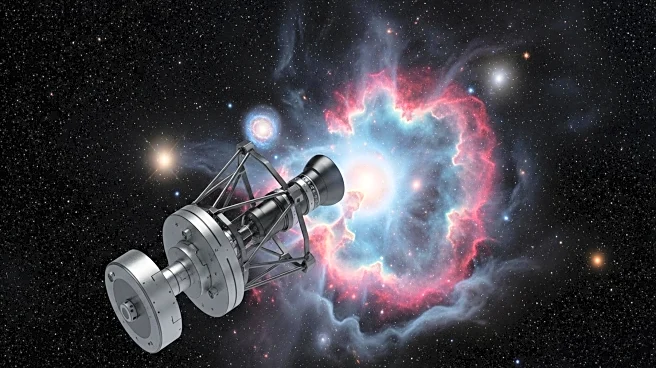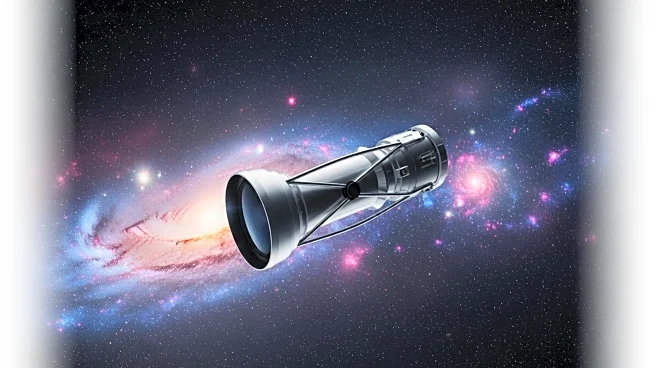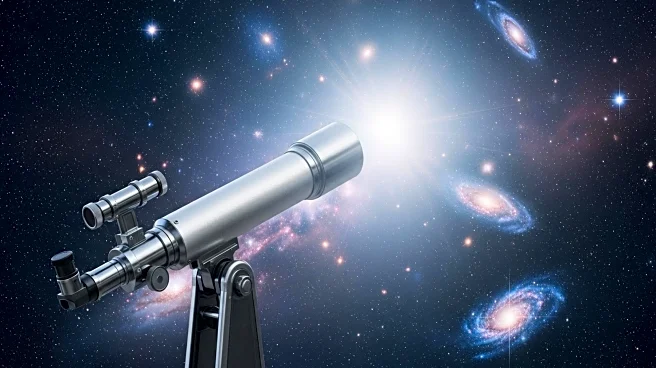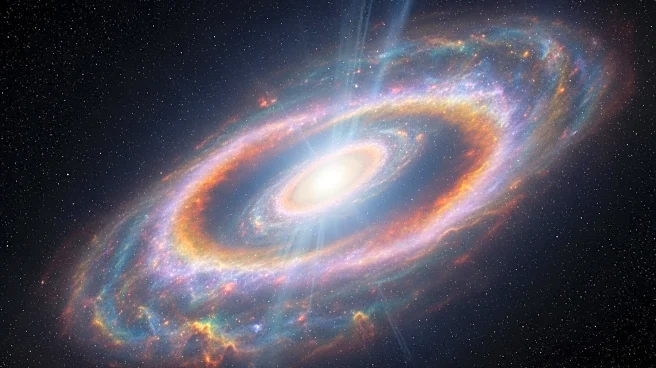What's Happening?
Astronomers from the University of Missouri, utilizing the James Webb Space Telescope (JWST), have identified 300 exceptionally bright objects that may represent the earliest galaxies in the universe. These findings, published in The Astrophysical Journal, suggest that these galaxies are much brighter than expected for their age, potentially challenging existing theories about the formation of the universe. The discovery was made by analyzing infrared images, which revealed these light sources as candidates for the first galaxies. The technique used, known as 'dropout,' identifies objects visible in red wavelengths but absent in blue, indicating a high redshift and thus great distance and age.
Why It's Important?
This discovery could significantly impact our understanding of galaxy formation and the early universe. If confirmed, these galaxies suggest that the universe's first stars and galaxies formed more rapidly and efficiently than current models predict. This could lead to a reevaluation of existing theories about the universe's evolution. The findings also highlight the capabilities of the JWST in providing high-quality data that can uncover previously unseen aspects of the cosmos, potentially leading to new insights into the universe's history and structure.
What's Next?
Further confirmation of these findings will require spectroscopy, which can accurately measure the redshift and composition of these galaxies. This method will help determine whether these objects are indeed among the first galaxies. The research team plans to conduct additional studies to confirm the nature of these objects, which could lead to a significant shift in our understanding of the universe's early stages.


